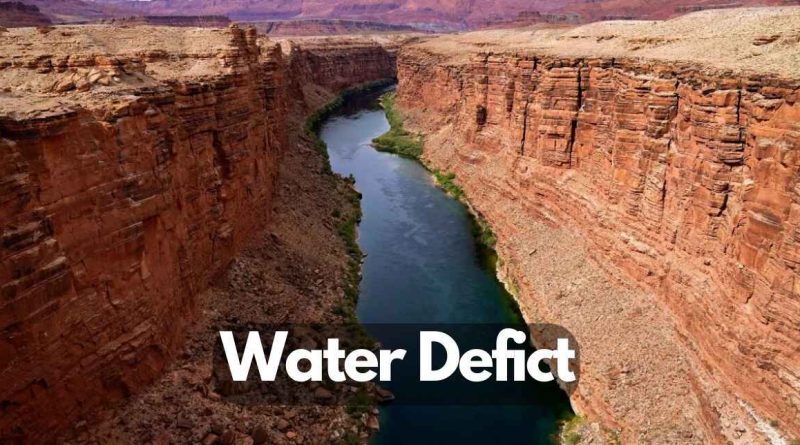No longer relying on quick fixes: Strategies for fostering enduring sustainability in the Colorado River
In the quest for prolonged sustainability amid the ongoing crisis surrounding the Colorado River, how can policymakers navigate the intricate web of challenges? Presented here are three innovative approaches.
The Colorado River Basin is presently entangled in a sustainability quandary.
The convergence of climate change, severe drought, and historical over-commitment to the river has led to a swift depletion of the principal reservoirs to their lowest points since their inception.
Previous efforts in water management, encompassing urban water conservation, investments in infrastructure efficiency, and reductions in water delivery, have granted a reprieve for Colorado River water users. Yet, the clock is ticking. Some are already grappling with the dire consequences of this crisis, while others brace for impending cuts.
Policymakers in the Colorado River Basin stand at a pivotal juncture, facing an opportunity to forestall more severe repercussions by enacting policies and management reforms that transcend the incremental measures taken thus far.
The quest for enduring sustainability
However, orchestrating such transformative changes is an immensely formidable task, particularly given the basin’s convoluted legal framework of water rights, the diverse demands of its users, and the uncertainty surrounding future water availability.
This raises the pivotal query: How can policymakers in the basin institute paradigm-shifting changes that propel the long-term sustainability of the Colorado River in the face of this crisis?
Exploring the depths of Lake Mead
As water levels recede, revealing submerged vessels and bodies
Drawing upon our expertise in examining transitions in water management through the lenses of water resource engineering and collaborative policymaking, we propose three substantive and procedural recommendations to aid Colorado River Basin policymakers in effecting transformative change.
- Depart from a fixed water quantity
Primarily, policymakers must stabilize the Colorado River system, ensuring that water usage remains within the bounds of water availability. Nevertheless, since streamflow is anticipated to dwindle with rising temperatures, any stabilization solution must be adaptable to fluctuations in water availability.
One method to achieve this is to alter the indicators of system-wide water availability that trigger water management actions. Currently, basin managers rely on sluggish-responding reservoir levels (which may also be obfuscated by intricate water accounting) for this purpose. In the short term, a more responsive indicator, such as a 5-year rolling average of inflow, could minimize dependence on diminishing storage.
In the long run, basin managers could contemplate an adaptive strategy, akin to approaches employed in other Western regions. This involves converting fixed-quantity water rights into shares of the total available water, with share allocations tailored to accommodate the existing water rights priority structure. Adjusting the total available water could facilitate a gradual replenishment of reservoirs, mitigating substantial water cuts during arid years. This additional step would propel the system beyond stabilization, fostering a more protracted recovery.
- Prioritize initiatives to diminish uncertainty
Transitioning to the management regime described above is likely to entail painful cutbacks for water users across the Colorado River Basin in the foreseeable future. However, it could usher in greater predictability and reliability over the long term – values that basin managers have previously expressed consensus on.
Managing for a known, albeit reduced, quantity of water is often more manageable than navigating the uncertainties of the unknown. Achieving this, however, necessitates equitable representation for all water users, including historically marginalized tribes and environmental groups, at the negotiation table to alleviate uncertainties regarding future water uses and requirements.
- Transcend the notion of ‘how to allocate water cuts’
Lastly, policymakers must broaden their conception of “water sustainability” in the Colorado River Basin. Beyond being a means for human, public, and ecological health, water catalyzes food production and energy generation.
Expanding our perspective from “how to distribute water reductions” to “how to uphold regional food and energy security” opens avenues for innovative negotiation and collaboration beyond the conventional zero-sum mentality.
These could encompass utilizing recently allocated federal funds for drought mitigation to enhance agricultural water use efficiency, supporting the transition to clean energy, and conserving ecosystems to realize more comprehensive sustainability objectives, rather than merely buying time through short-term conservation measures.
Transforming the management of the Colorado River Basin to mitigate the prevailing water crisis and achieve enduring water sustainability demands a shift not only in policies but also in our conceptualization of water use and needs.
The trio of suggestions presented above offers a pathway for policymakers to embrace this moment of historic challenge and opportunity, steering away from incremental changes and ushering in a new era of solutions for the Colorado River.

